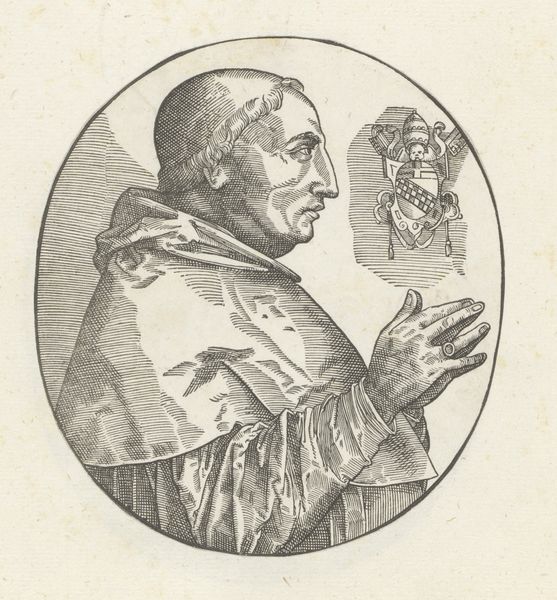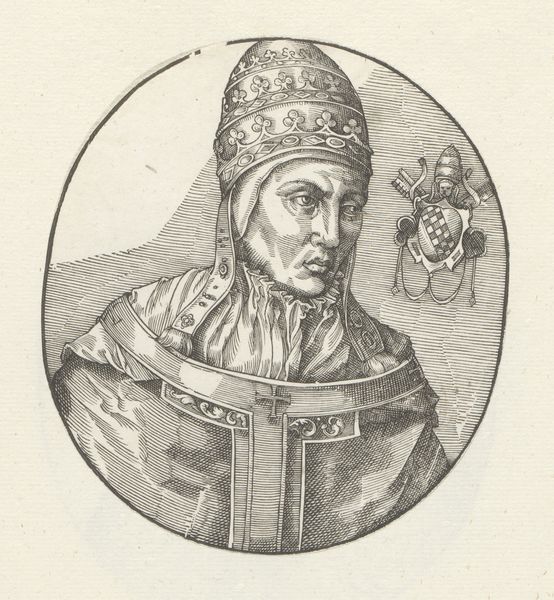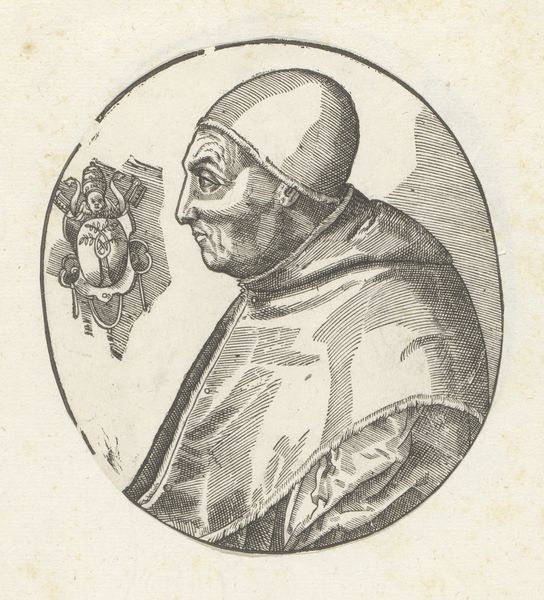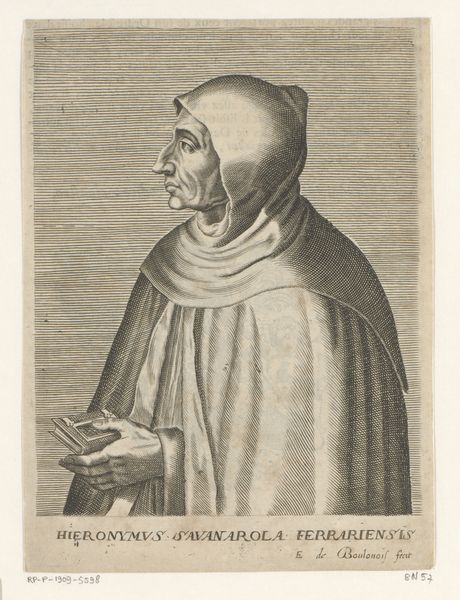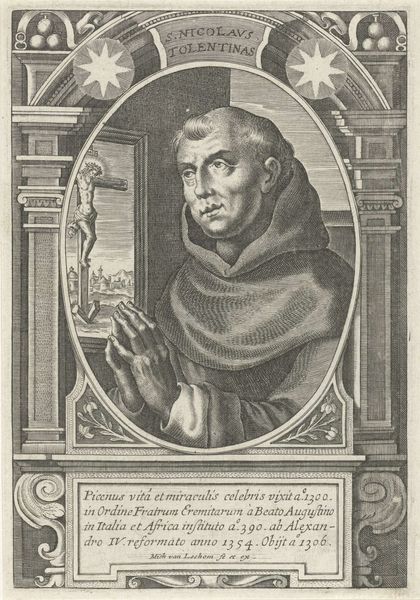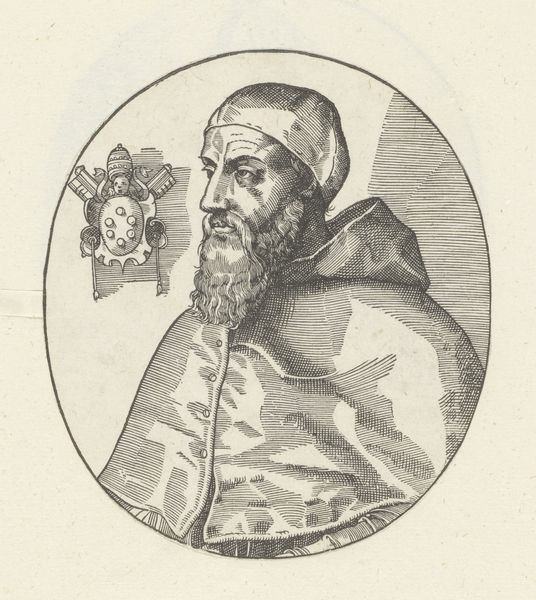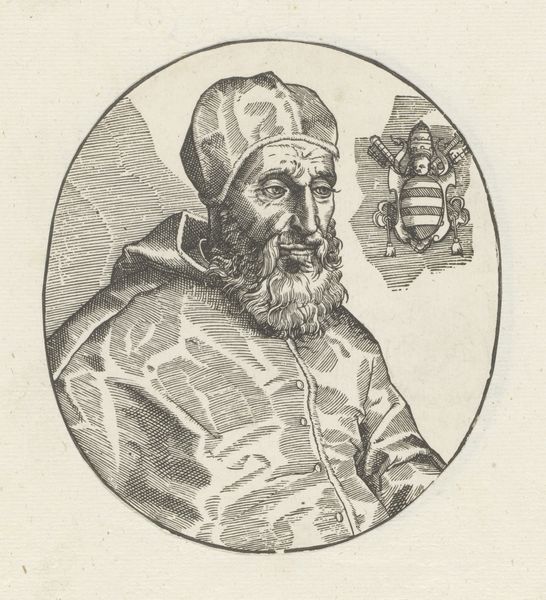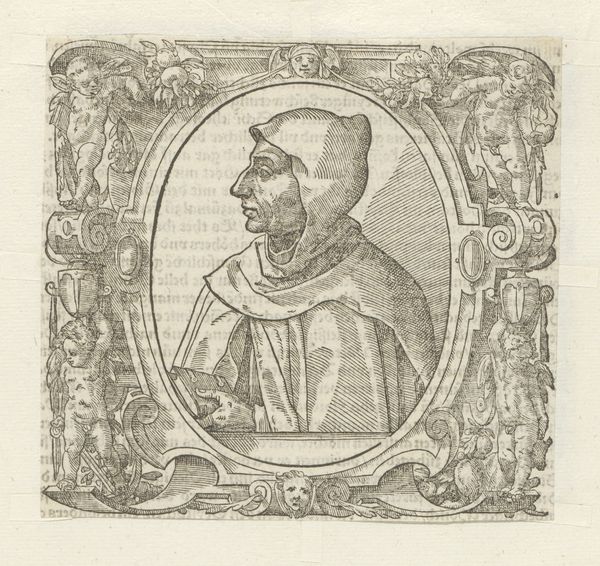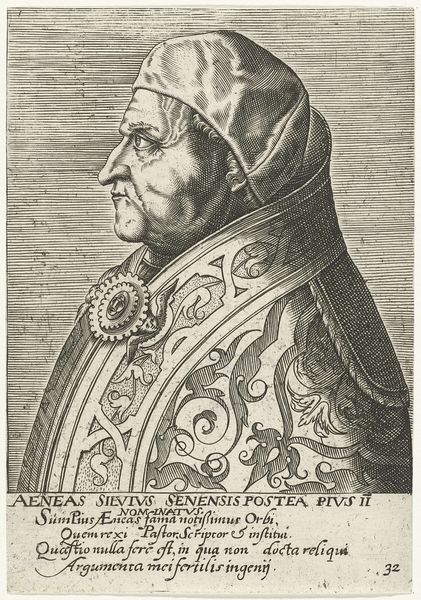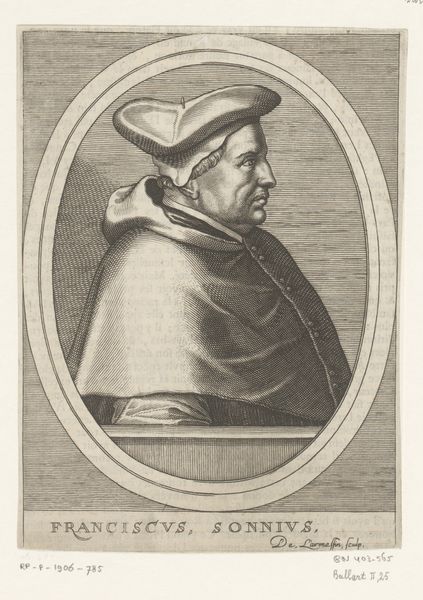
print, engraving
#
portrait
#
medieval
# print
#
old engraving style
#
italian-renaissance
#
engraving
Dimensions: height 129 mm, width 114 mm
Copyright: Rijks Museum: Open Domain
Editor: This is an engraving entitled "Portret van paus Gregorius XII" – a portrait of Pope Gregory XII, created sometime between 1549 and 1573 by an anonymous artist. The stark lines and shading give it a rather solemn feel, don't you think? What can you tell me about its context? Curator: Absolutely, it’s more than just a portrait. We need to consider what papal imagery signified in the 16th century, especially given the turbulent relationship between religious and secular powers. The image subtly projects authority through the meticulous detail of the garments and the papal crest, yet simultaneously seems to highlight mortality in its rather unflattering realism, wouldn’t you agree? Editor: I see what you mean. The hands, particularly, are so detailed they look almost frail. Is that contrast intentional? Curator: I think it raises the critical questions around the Renaissance papacy and its role in wider society. This engraving perhaps inadvertently shows the tensions between spiritual power and the very human condition of the man holding that power. It begs us to look at how identity is constructed and perceived, even within the supposed divine right of rulers. How does that interplay of frailty and power make you feel? Editor: It’s interesting how the imperfections make the figure more relatable and prompt thoughts on larger themes. It's not just a portrait, but a statement. Curator: Exactly. By acknowledging that art is never created in a vacuum, we confront not just aesthetics but politics and history intertwined. Editor: I'm definitely walking away seeing this in a different light now. Curator: Wonderful. Recognizing that interconnection between art and culture opens pathways for critical inquiry and deepens the viewing experience.
Comments
No comments
Be the first to comment and join the conversation on the ultimate creative platform.
